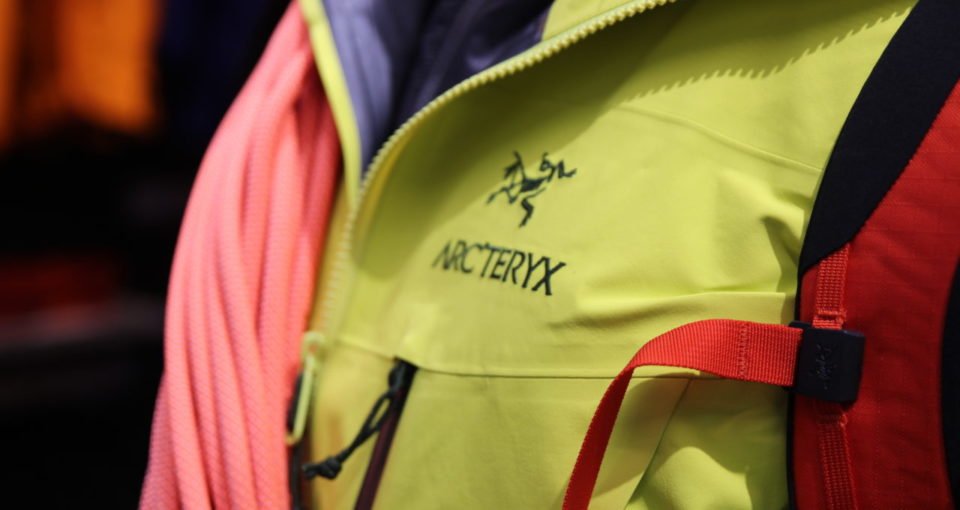Responsible Apparel Consumption for Athletes
Will Ross, January 19, 2015

Keeping an eye out for responsibly manufactured gear isn’t easy. With so many authorities, fabrics and processes out there, getting confused is inevitable and keeping in touch with the latest developments requires a significant commitment. To help you on your way, here is a round-up of some of the major players in responsible apparel production for sports people, as well as some neat web apps that share supply chain transparency. Define your own principles in responsible consumption and make more informed decisions, even if you regard sustainability in apparel production to be unattainable.
Web apps
One of the most recent tools we’ve come across has been created by animal welfare charity, FOUR PAWS. Launched in December 2012, the Cruelty Free Down Challenge invites participating brands to pass through a series of levels to the top a virtual summit – clean, traceable down. Participating brands Fjällräven and Patagonia are well on their way to topping out, with Mammut, Salewa and Yeti making their way through stages of the mid-stages qualification. Two key measures for progress include avoiding parallel production – using suppliers that only deal in non-live-plucked, non-force-feed birds – and inspecting farms unannounced.
From New Zealand wool production, the Icebreaker Baacode allows you to trace the merino used in your garment back to the source. Once you have made a search and located your item’s origin, you can see more about about the living conditions of the sheep and growers who contributed early on in the supply chain.
Picture Organic Clothing have built a neat infographic that takes you through design, raw materials, processes of production and transport used in making their products. To further refine the impact of your chosen garment, you can outline what method of transport you are going to use to get hold of it, as well as how you intend to wash and dispose of it.
Patagonia Footprint Chronicles aggregates textile mills and factories used by the brand and places their location on a world map. By clicking on the map itself, you can find out more about individual suppliers, the number of employees they hire at each site, the gender ratio, languages spoken, the category of products created and when they entered a relationship with Patagonia.
Authorities and organisations
The bluesign system ensures that no harmful chemicals have made their way into the supply chain and caused damage to natural environments or humans. Requirements are set to meet the tight consumer safety requirements placed on textiles.
The Sustainable Apparel Coalition includes 100 of the top apparel and footwear brands in the US, bound together by a commitment to reduce the environmental and social impact of their supply chains. The group is developing the Higg Index to measure and display the environmental impact of product, distribution, consumption and disposal in a consumer-friendly way.
The National Risk Management Research Laboratory’s Life Cycle Assessment considers durability and product lifetime to be the greatest indicator of environmental impact. GORE-TEX recently used the assessment to evaluate the impact or ‘durability’ of their jackets, finding that in production, a garment uses 72.7kg of CO2-equivalent, just over two cubic metres of fresh water and nearly 1000 MJ of energy.
OEKO-TEX Standard 100 look out for harmful substances in textiles and have more stringent requirements for fabrics depending on their intended use. Class 1 requirements are for those items for babies and toddlers under the age of 3 years, Class 2 for textiles close to the skin, Class 3 for those away from the skin and Class 4 is intended for furnishing materials.
1% for the Planet is an alliance of responsible companies that donate at least 1% of their annual sales to environmental organisations. Now with over 1000 members, 1% serves as the link between businesses and environmental groups, ensuring that money is spent in the right areas.
At the end of 2014, Patagonia announced the Global Traceable Down Standard, providing a road map for the complete eradication of irresponsible down sourcing – no live plucking or force-feeding.
Fabric types
PrimaLoft ECO is an insulating layer made from post-consumer recycled plastic. In the process of making one kilogram of PrimaLoft ECO, 28 recycled bottles are used, working at around six bottles per garment.
Polartec partner with Unifi to make Repreve 100 entirely out of post-consumer products, 95% clear plastic bottles and 5% recycled material. Once pelletised and reprocessed, 27 bottles make one pound of Repreve 100.
Singtex Industrial have developed S.Cafe from recycled coffee grounds. The fabric is used by Timberland’s EarthKeepers line.
Adidas DryDye removed the need for water in the drying process of t-shirt manufacturing. Instead, pressurised carbon dioxide is used, requiring 50% less energy and 5% less chemicals.
If you feel as though you can add to this list, email Will Ross (will@zafiri.com) to suggest an update.